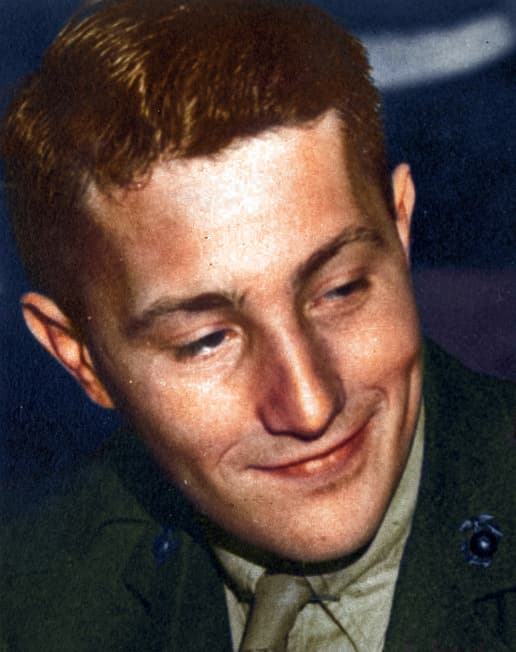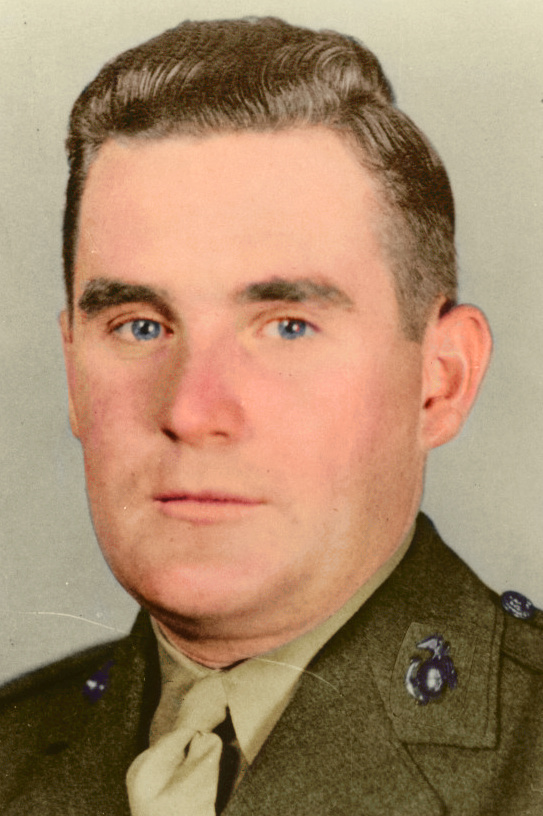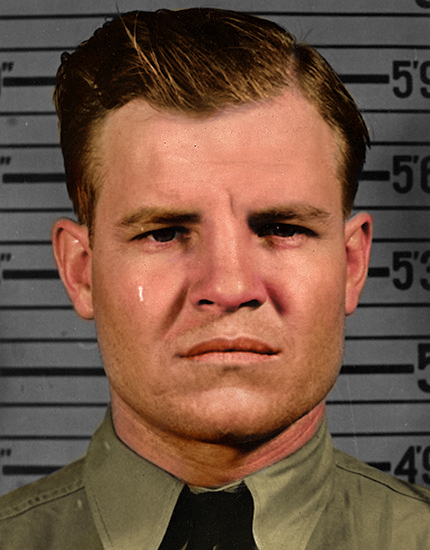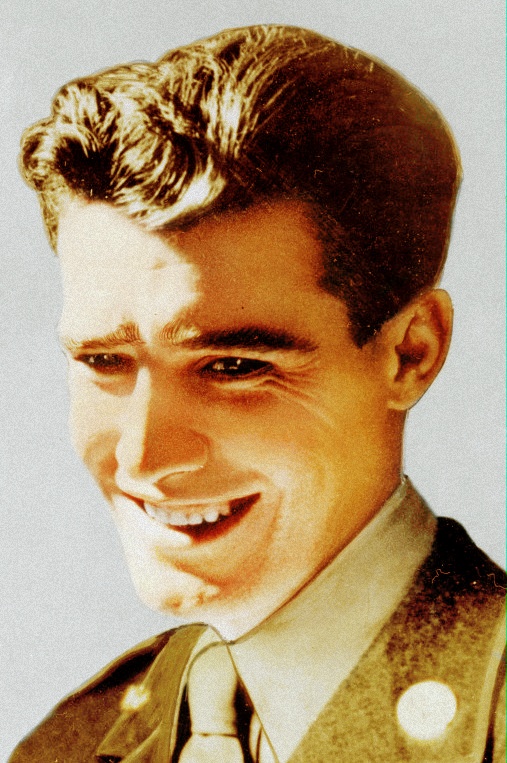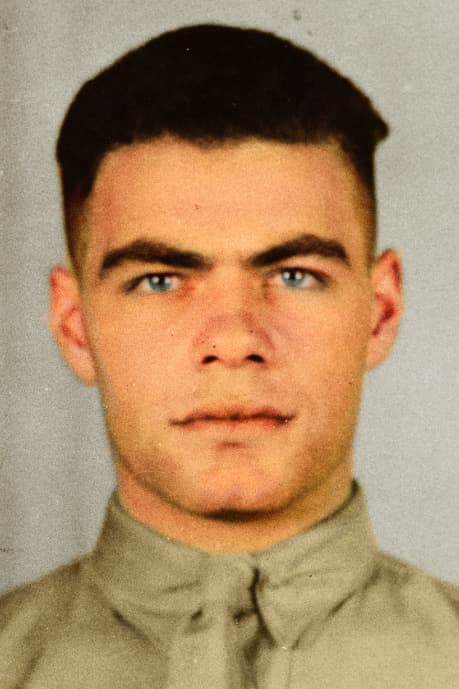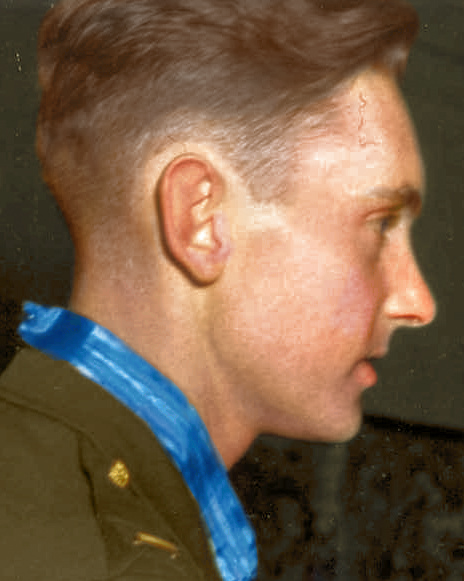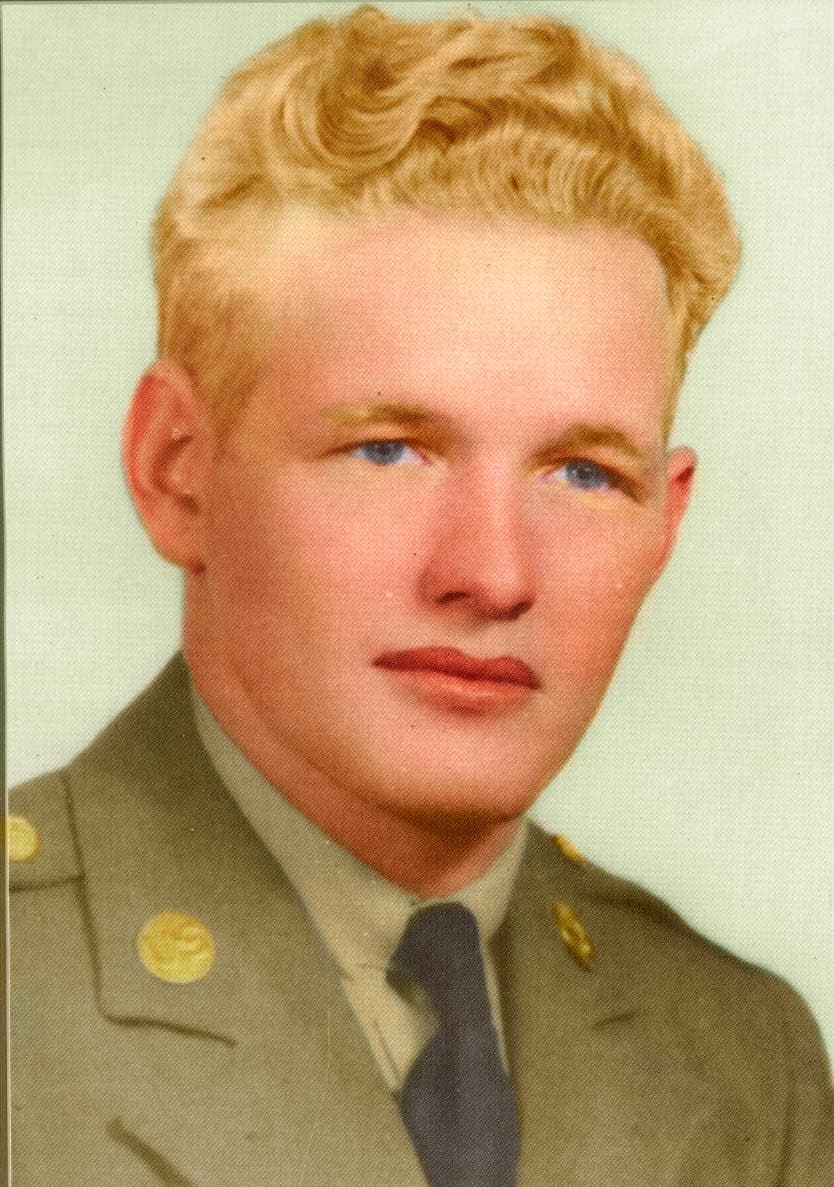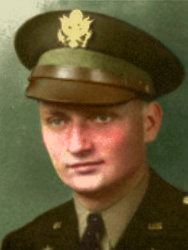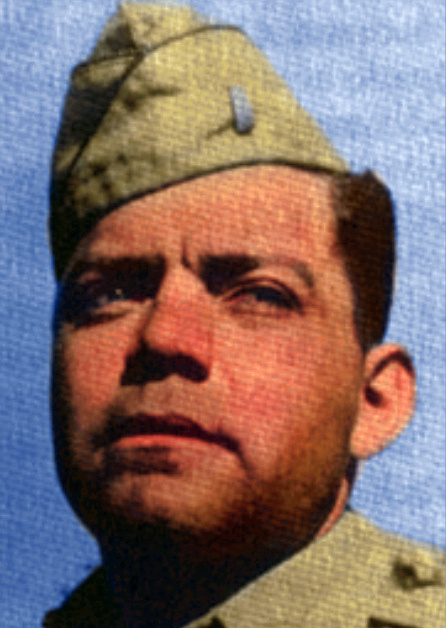PFC Leo J. Powers, 34, USA (1909–1967)
Company L, 133rd Infantry Regiment, 34th Infantry Division
Hill 175, northwest of Cassino, Italy
February 3, 1944
Presented January 10, 1945
The President of the United States of America, in the name of Congress, takes pleasure in presenting the Medal of Honor to PFC Leo J. Powers, United States Army, for conspicuous gallantry and intrepidity at risk of life above and beyond the call of duty while serving with Company L, 133rd Infantry Regiment, 34th Infantry Division.
On February 3, 1944, PFC Powers’ company was assigned the mission of capturing Hill 175, the key enemy strongpoint northwest of Cassino, Italy. The enemy, estimated to be at least 50 in strength, supported by machine guns emplaced in three pillboxes and mortar fire from behind the hill, was able to pin the attackers down and inflict eight casualties. The company was unable to advance, but PFC Powers, a rifleman in one of the assault platoons, on his own initiative and in the face of the terrific fire, crawled forward to assault one of the enemy pillboxes which he had spotted. Armed with two hand grenades and well aware that if the enemy should see him it would mean almost certain death, PFC Powers crawled up the hill to within 15 yards of the enemy pillbox. Then standing upright in full view of the enemy gunners in order to throw his grenade into the small opening in the roof, he tossed a grenade into the pillbox. At this close, the grenade entered the pillbox, killed two of the occupants and three or four more fled the position, probably wounded. This enemy gun silenced, the center of the line was able to move forward again, but almost immediately came under machine-gun fire from a second enemy pillbox on the left flank. PFC Powers, however, had located this pillbox, and crawled toward it with absolutely no cover if the enemy should see him. Raising himself in full view of the enemy gunners about 15 feet from the pillbox, PFC Powers threw his grenade into the pillbox, silencing this gun, killing another German and probably wounding three or four more who fled. PFC Powers, still acting on his own initiative, commenced crawling toward the third enemy pillbox in the face of heavy machine-pistol and machine-gun fire. Skillfully availing himself of the meager cover and concealment, PFC Powers crawled up to within ten yards of this pillbox fully exposed himself to the enemy gunners, stood upright and tossed the two grenades into the small opening in the roof of the pillbox. His grenades killed two of the enemy and four more, all wounded, came out and surrendered to PFC Powers, who was now unarmed. PFC Powers had worked his way over the entire company front, and against tremendous odds had single-handedly broken the backbone of this heavily defended and strategic enemy position, and enabled his regiment to advance into the city of Cassino. PFC Powers’ fighting determination and intrepidity in battle exemplify the highest traditions of the U.S. Armed Forces.
